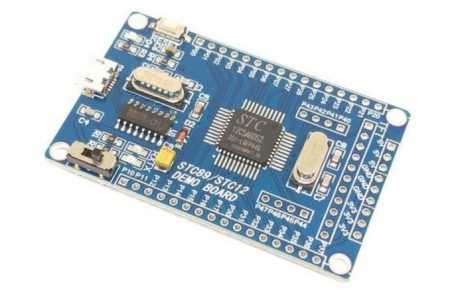- +86-755-23012705
- Building 3, Jinfeng Industrial Park, Fuyong Street, Baoan District, Shenzhen ,China
- [email protected]
The hardware circuit design of a single chip microcomputer application system contains two parts: First, the system expansion, that is, the internal functional units of the microcontroller, such as ROM, RAM, I/O, timer/counter, interrupt system, etc. can not meet the requirements of the application system, must be extended off-chip, select the appropriate chip, design the corresponding circuit. Secondly, the configuration of the system, i.e. the configuration of peripheral devices such as keyboards, displays, printers, A/D, D/A converters etc. in accordance with the functional requirements of the system, should be designed with suitable interface circuits.
The extension and configuration of the system should follow the following principles.
1. Select typical circuits as far as possible and conform to the conventional usage of microcontrollers. Lay a good foundation for the standardisation and modularisation of the hardware system.
2. System expansion and peripherals should be configured at a level that fully meets the functional requirements of the application system, and leaves an appropriate margin for secondary development.
3. The hardware structure should be considered together with the application software programme. Hardware structure and software solutions will have an impact on each other, the principle of consideration is: software can achieve the function as far as possible by the software to simplify the hardware structure. However, it must be noted that hardware functions implemented by software generally have a longer response time than hardware implementation and take up CPU time.

4. The relevant devices in the system should be as far as possible to achieve performance matching. If a CMOS chip microcontroller is selected to form a low-power system, all chips in the system should be selected as low-power products as possible.
5. Reliability and anti-interference design is an essential part of the hardware design, which includes chip, device selection, decoupling filtering, printed circuit board wiring, channel isolation, etc.
6. The microcontroller peripheral circuit is more, must consider its driving ability. Insufficient drive capability, the system does not work reliably, can enhance the drive capability by adding line drivers or reduce the power consumption of the chip to reduce the bus load.
7. Try to design the hardware system in the direction of “monolithic”. The more devices in the system, the stronger the mutual interference between devices, power consumption also increases, and inevitably reduces the stability of the system. With the integration of microcontroller on-chip functions are increasingly strong, the real system-on-a-chip SoC can be achieved, such as the ST company launched μPSD32 × × series of products on a chip integrated 80C32 core, high-capacity FLASH memory, SRAM, A/D, I/O, two serial ports, watchdog, power-on reset circuit and so on.






XPCB Limited is a premium PCB & PCBA manufacturer based in China.
We specialize in multilayer flexible circuits, rigid-flex PCB, HDI PCB, and Rogers PCB.
Quick-turn PCB prototyping is our specialty. Demanding project is our advantage.
Tel : +86-136-3163-3671
Fax : +86-755-2301 2705
Email : [email protected]
© 2024 - XPCB Limited All Right Reserve
